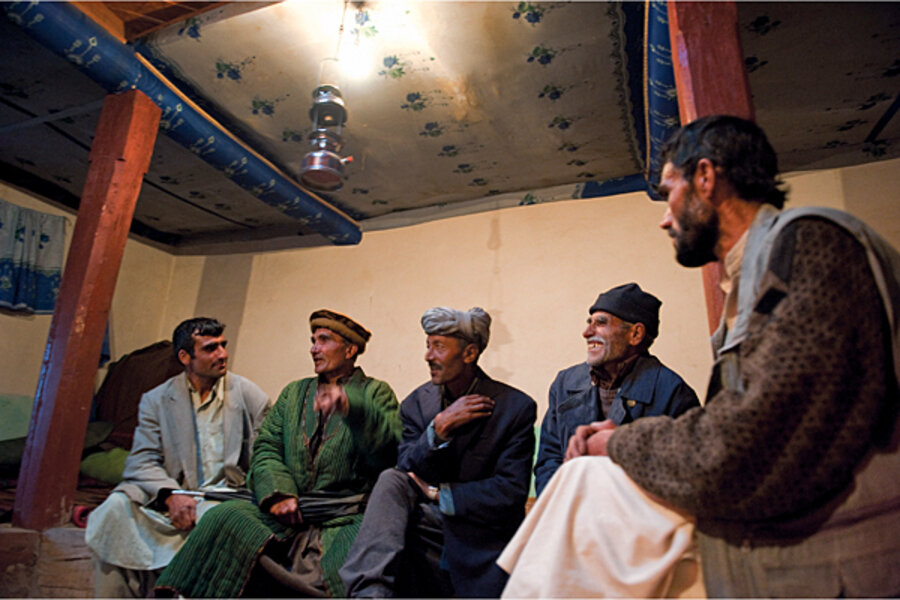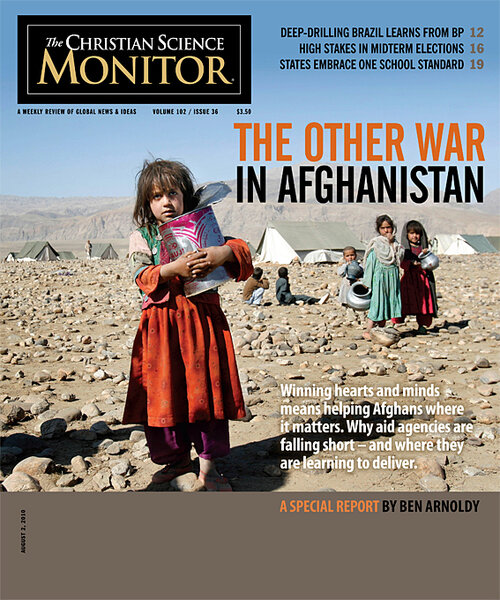Afghanistan war: Successful foreign assistance lets Afghans pick their project
Loading...
| Uland, Afghanistan
Living on the sides of an isolated ravine near the Tajikistan border in the province of Badakhshan, the villagers of Uland and Khushpak have electric power for the first time. Not only are they pleased about the modern convenience, but also about the democratic way they got it.
The electricity comes from a new micro-hydro turbine installed for less than $50,000. The villagers received the money directly from the Afghan government – on the condition that they would vote on how to use it and pitch in their own labor as much as possible. It's part of the National Solidarity Program (NSP), which is funded by international donors, including the United States.
The NSP is a compelling model for scaling up development with less of the waste and lack of oversight that comes with large contracts. The idea behind the program: Give every Afghan village a chunk of money and let it decide what to build.
"We are happy about the government," says Agha Mohammad, an elder of Khushpak. "Before this power, there was no other project."
Sitting on red carpets in the home of a villager in Uland, under the cozy glow of a new light bulb on a stormy evening, local leaders explain how, over the course of a year and a half, they used the NSP to electrify their community.
The 87 households of Uland and Khushpak received a combined $29,800 from the government. The average NSP grant is $33,000.
But first, the villagers had to elect by secret ballot a shura, or council, that would handle the money and prioritize the spending. The Aga Khan Foundation, an international nongovernmental organization with long ties to the region, oversaw the election. All NSP projects are helped by NGOs, known as facilitating partners, in exchange for a fee paid by the Afghan government.
The shura led a week of discussions that decided electricity to be the priority. Nationwide, villagers have most often chosen clean water projects, followed by roads, irrigation canals, and electricity.
The cost of the installation of a micro-hydro turbine was $48,730, so Aga Khan agreed to kick in $13,000 if the villagers agreed to contribute their labor to bring the costs down.
"NSP brought lots of changes here, including coordination among the people," says Mr. Mohammad.
"This electricity brought an equality of all houses during the night. Before, some people had two torches, some had candles, some had nothing." Those who had nothing before are now the first to come and volunteer whenever there is community work to be done.
The program offers the sort of massive scale that the US wants: 30,000 villages, or 70 percent of rural Afghanistan, have done an NSP project. Some $700 million has been spent, yet the bottom-up approach has kept the advantages of small projects, including close monitoring and local input and ownership.
Unlike the jaded feelings often left in the wake of large outside contract projects, the NSP has improved perceptions of government, according to a donor-funded study led by Andrew Beath, a researcher from Harvard University in Cambridge, Mass. The study looked at a random sample of 500 villages in similar regions, half with NSP and half without. Villages with an NSP project gave higher marks to the Afghan president (plus four percentage points), their provincial governor (plus six), the district administrator (plus seven), NGO workers (plus four), and the US military (plus three). The data also showed improvements in safe-water access and hours of electricity available in projects targeting those problems.
"We were getting water from canals and from the river [and] there was lots of sickness," says Faiz Mohammad, an elder in Kor Kah. His village, near Baharak, used its NSP money, with the assistance of engineers from the NGO Afghan Aid, to lay four miles of pipe from a mountain spring down to spigots, one for every five houses. "Now there is no diseases [and] it's very easy for us to get the water."
Related:
• Afghanistan war: How USAID loses hearts and minds A Monitor investigation
• Afghanistan war: USAID spends too much, too fast to win hearts and minds






